Tony Nelson Captures the Mad Ripple’s Milieu
Maggie Sandford offers an engaging look into photographer Tony Nelson's new exhibition of work documenting the local artist community behind Jim Walsh's (aka The Mad Ripple) weekly Hootenanny nights.
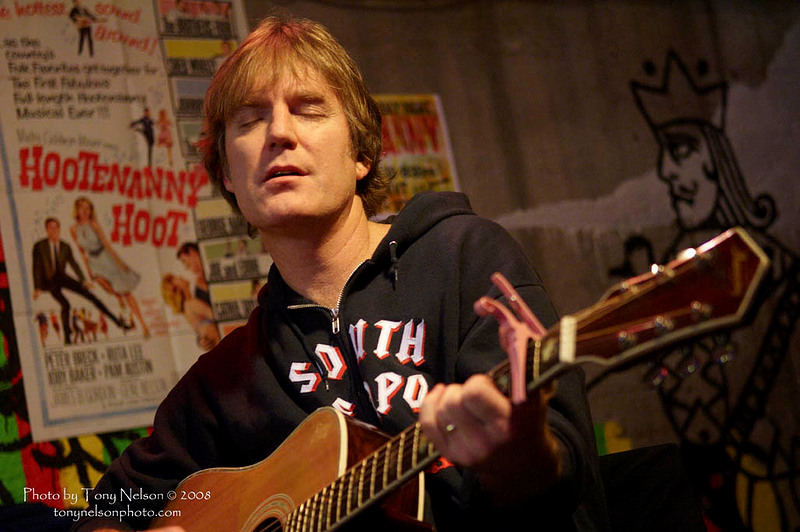
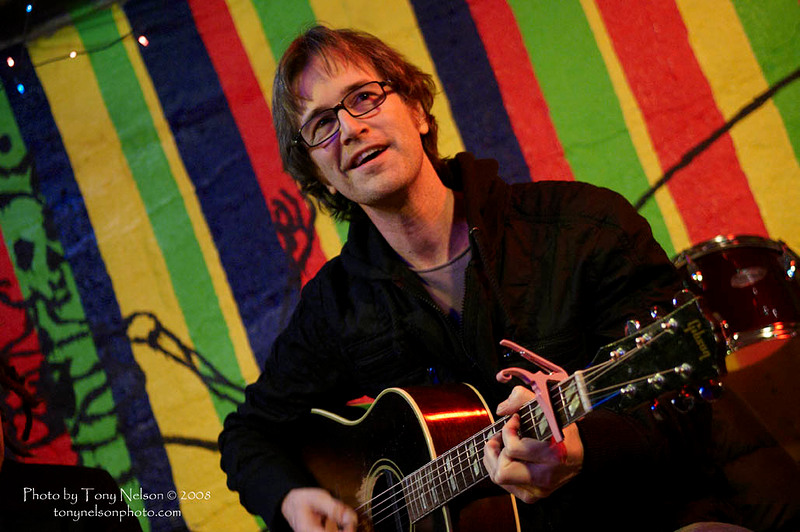
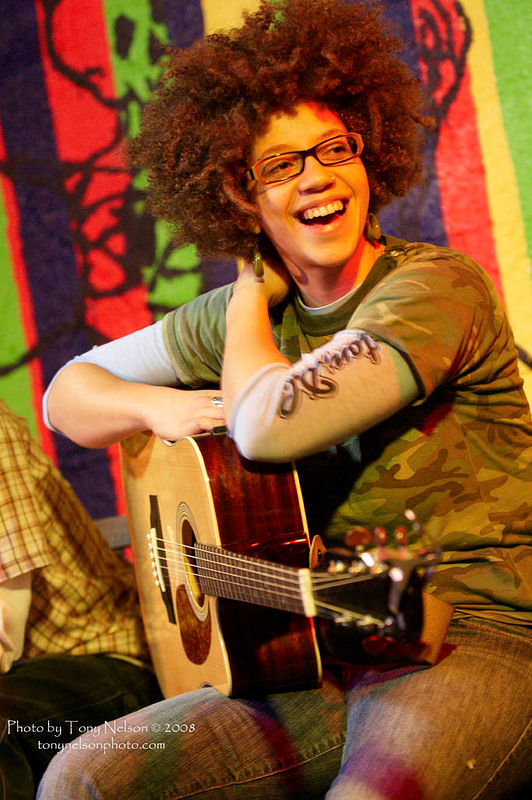

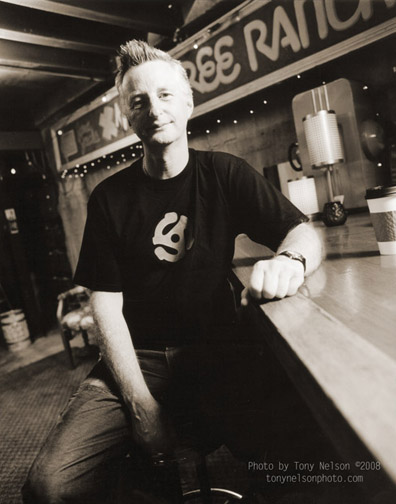
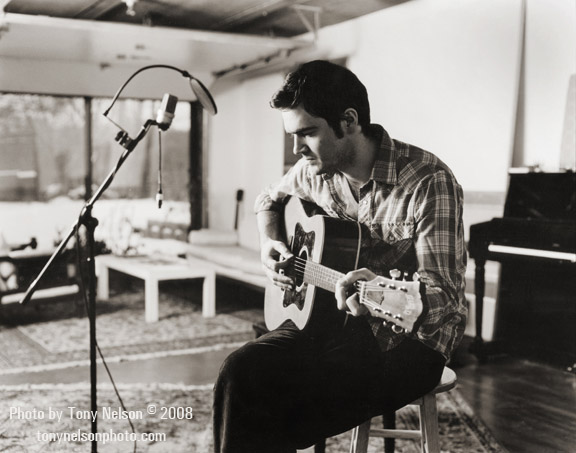
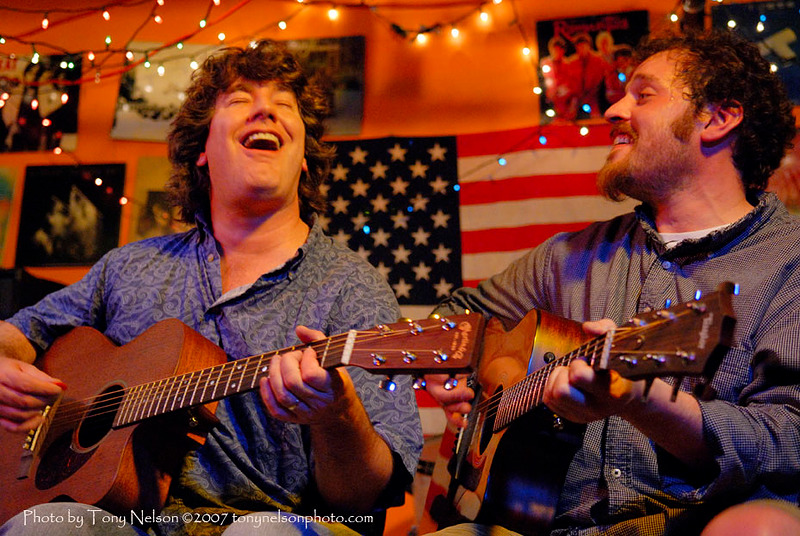
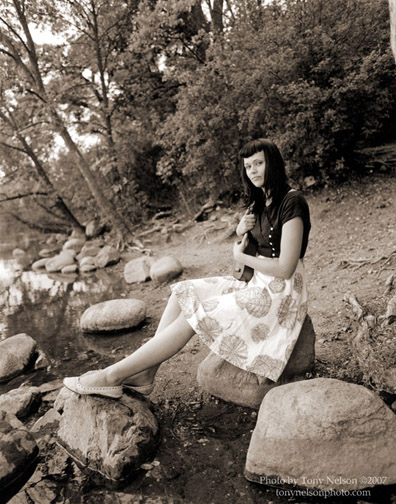
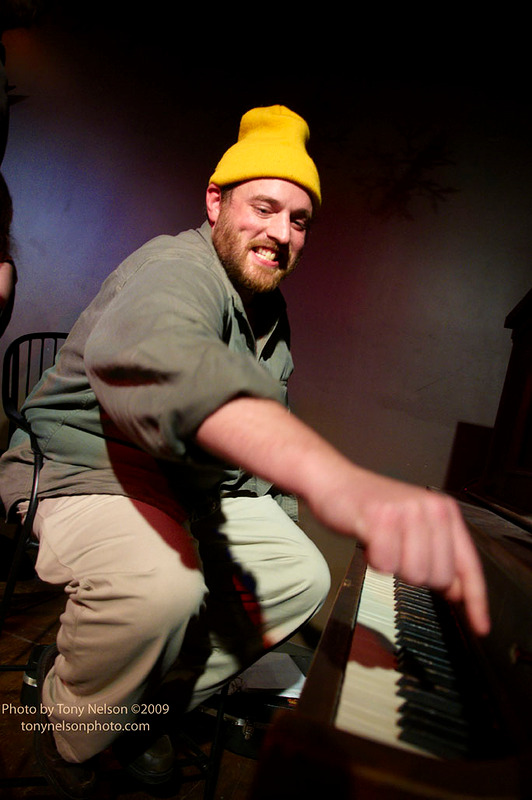
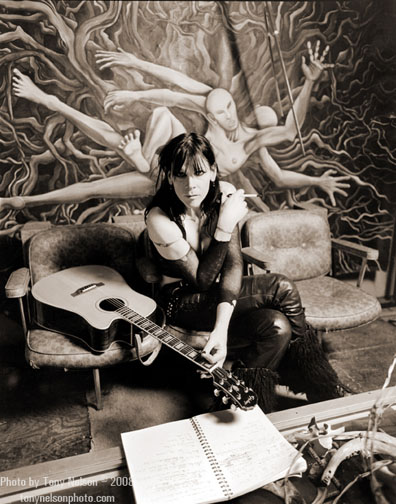
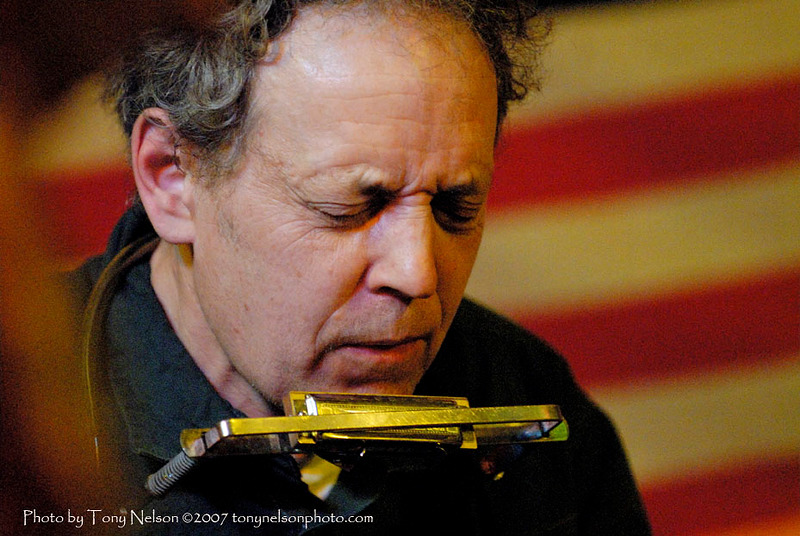
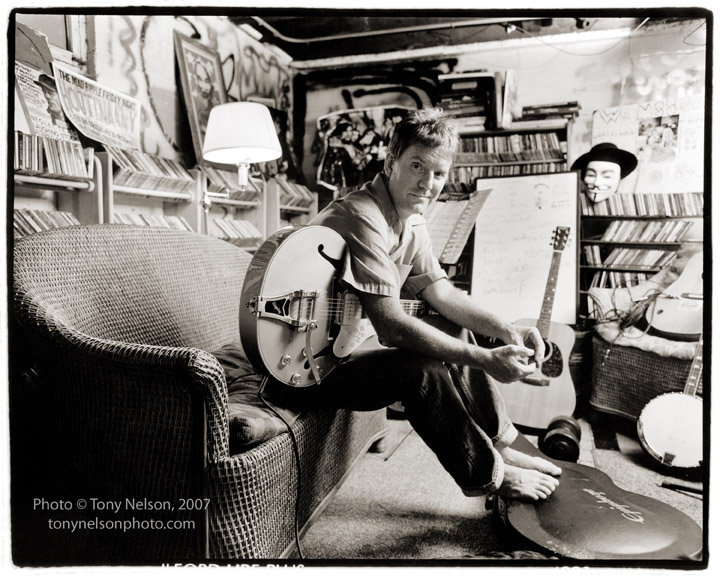
EVERYONE WANTS TO BE PART OF SOMETHING COOL. And let’s face it — the coolest cats around are musicians. It’s a fact of life.
This seems to be the principle behind Tony Nelson’s photo exhibit Hootenanny: A Community, showing through July 24 at the Fox Tax Gallery in Northeast Minneapolis. Through his images, the veteran music photographer welcomes the viewer into a local music phenomenon: Hootenanny, a weekly musical communion run by The Mad Ripple — a.k.a. Jim Walsh, locally notorious musician and music journalist.
“‘Hootenanny’ is an inclusive thing,” Walsh explained in an interview the week Nelson’s show opened. “I wanted to hear songs. I had been going to places where people were talking over the songwriters — and that’s fine. But I wanted a place that was very intimate, where the focus is on the music.”
Modeled after communal folk performances of yesteryear, a Hootenanny is not strictly a “show” in the formal sense; it’s not really an open mic or jam session either. Walsh, a very animated Master of Ceremonies, cycles from seven to ten predetermined performers in and out of the audience to perform their own songs and improvise back-up for one another. There’s hootin’ and hollerin’, drinkin’ and cussin’; Walsh even reserves the right to call unsuspecting audience members up to join in the fun, if he thinks they have something to contribute. He can do that. It’s a hootenanny, a place where people come together to make something bigger than themselves.
That’s precisely what attracted Nelson to the “Hoot,” as it’s come to be called, back in November 2006. “Jim sent out a MySpace thing and said he was having a Hootenanny in the basement of this coffee shop (Java Jack’s), him and some other songwriters.” Nelson remembers, “I liked idea-it was free, in a venue never heard of, and early on a Friday. It was unique.” After attending that second-ever Hoot, Nelson realized Walsh was on to something. He wanted to start documenting the events, but the venue was too dark — being, as it was, literally underground. But the men were not deterred. Nelson and Walsh went to Home Depot for lights, added gels from Nelson’s studio, and lit the place for fifty bucks.
Then, over the next three years, Nelson shot nearly all of the weekly Hoots, bearing witness to the weekly musical get-together’s distinctive ambiance and growing popularity. As he got to know the regulars, Nelson decided also to do portraits of some of the Hoot’s mainstays in their creative spaces: Walsh in his studio; Frank Drennan and Cindy Wasserman (together, Dead Rock West) in a hotel room while on tour; Mayda Miller behind the counter at her barista job; Jeaneen Gauthier, on her bike, and two dozen more. Gauthier loved the results, saying, “Tony has ability to make people look legendary.”
Viewing Nelson’s exhibition of work, you can see what she means — his individual portraits are classic, beautifully composed. Shot on black-and-white Ilford film and developed in his home darkroom, the images show us musicians as we know musicians — looking boldly into the camera or coolly playing candid. Positioned below the portraits is a continuous line of color photographs: digital prints of the artists playing at various venues’ Hoots over the years. At first glance, the photos’ lack of frames nearly marks their inclusion in the show as an afterthought. But these color snapshots become a necessary reference point as the visitor moves through the exhibit, a physical through-line connecting all the artists. Together, the two sets of photographs elicit that familiar feeling you get looking at close-up photographs in music magazines — the feeling that you’ve just become privy to something cool, something real about how the artists work. Not coincidentally, Tony and Jim became friends working as Twin Cities correspondents for Rolling Stone. That rock-n-roll feeling? That’s their jam, man.
In separate interviews before the opening, Walsh and Nelson praised one another for the success of Hootenanny: A Community; “Tony got it right away,” Walsh says; Nelson, on the other hand, claims the whole thing came from “Jim willing it to happen.” But the truth lies somewhere in between. As the show’s curator, mplsart.com‘s Emma Berg, put it: “When people collaborate like that, you actually finish up with a different end result. And the better the city is for it.”
At the special post-opening Hootenanny at the Red Stag, the collaborative nature of this project was self-evident: a seemingly endless stream of talented local artists rocked the stage together, from Twin Cities men-about-town like Martin Devaney and Rick Robot to newer-comers like Mayda Miller and Chastity Brown. Highlights of the night included the tear-jerking, fist-raising “A Song is More than Just a Song” led by Stook and sung by everyone, and Rick Robot’s hearty, a cappella rendition of an old Irish drinking song (which marked the only number not backed by a pitch-perfect Eliza Blue on fiddle). There was even a surprise guest appearance from Jon Auer, formerly of the Posies, who had found himself stranded in Minneapolis for the night and so, wound up at the Hoot. That sort of special guest appearance isn’t unusual either-the list of past crashers includes Billy Bragg and Dan Wilson, both of whom appear in Nelson’s documentary photographs.
Hootenanny: A Community is worth checking out for the same reasons a Hootenanny is worth checking out: “[The exhibition] is a real testament to creativity, how it happens, and what can come from it,” Walsh says. “It’s all guts and all heart and all instinct. If you’ve got something to chew on every day, something to feed your soul, then you win.” Who wouldn’t want to be part of that?
****
Related events:
Hootenanny: A Community, photographs by Tony Nelson, is on view at Fox Tax Gallery through July 24.
For the next Mad Ripple Hootenanny on Friday July 3, the musicians are trying out a new venue, the Music Box Theatre in Minneapolis. Performances by Mayda Miller, Chastity Brown, Johnny Solomon, Jimmy Peterson, the Mad Ripple himself and more begin at 6:30 pm, followed by a slideshow from the exhibition by Tony Nelson and a free-for-all from the Bottom Forty at 10 pm. Check in with the Mad Ripple’s MySpace page for information on upcoming Hoot dates.
About the author: Maggie Sandford is a Twin Cities-based writer and performer with roots in Seattle and New York. She writes essays, travel journalism, fiction, humor, poetry, and film, with a particular interest in the relationship between art and science. Her work has been featured at ComedyCentral.com, NYTimes.com, OnlineAdventure.com, and on National Public Radio.